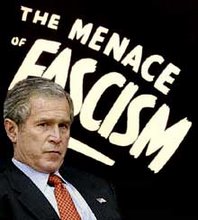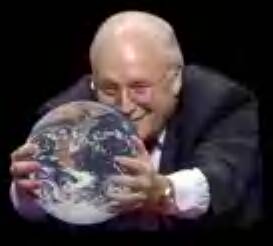Luv and Haight: A different Take on the Summer of Love
by Ron Jacobs Page 1 of 1 page(s)
http://www.opednews.com
June 1, 2007 saw the first of what is certain to be many dates celebrated in the media forty years after the so-called Summer of Love. That day was the day, of course, that the Beatles' legendary album, Sgt. Pepper's Lonely Hearts Club Band, was released. According to most rock critics who look at the subject historically, this album heralded a new phase of rock and roll. The album was reviewed in normally staid newspapers that had previously considered rock music in the same way they regarded pig racing. In other words, it didn't exist unless there was a scandal. Of course, with rock and roll being rock and roll, there were plenty of scandals, usually involving drugs and sex.
I turned twelve in 1967 and was only slightly aware of the Summer of Love phenomenon. It's not to say that what I knew about it didn't interest me, but in the suburban town where I lived, boys were still being thrown out of junior high school for having hair that covered the top of their ears, and girls' parents were called if their skirts were more than two inches above their knees. Of course, that didn't prevent students from testing the rules on a daily basis, nor did it prevent the school authorities from enforcing their rules as if they were punishing hardened felons. Our radios played "If You're Going to San Francisco (Be Sure to Wear Some Flowers In Your Hair)" and it seemed like the cool guy at the local record store played Sgt. Pepper's every time I went in to see what was new on the Top 40. The one or two kids that ran away to become hippies were the stuff of local rumor and legend, but no one really knew whether they had gone to San Francisco or, merely, to Georgetown--Washington DC's hippie ghetto. Both were miles away, literally (in San Francisco's case) and figuratively.
There was a fellow named Daniel I knew when I lived in Berkeley. He and I used to spend hours hanging out on Telegraph Avenue and many other places. Daniel was the quintessential street freak. If the Hog Farm and other communes were communities of freaks who lived in an alternative reality that they helped create, Daniel was the loner in the picture. He left Ohio in 1967 for Haight-Ashbury when he was fourteen, looking for the magical place he had read about. He found a lot of magic. but he arrived just in time for the first of many police crackdowns.
These occurred with almost weekly frequency, as the authorities tried to get rid of the situation created by the migration. As Daniel told the story, each attempt by the police to clear an area by force was usually met with resistance. This, naturally, resulted in a series of riots and an intensification of fear and anger from both sides of the cultural divide. Groups like the Diggers tried to help the migrants with food and clothing, while some of the local hip businesses tried to work with the city to calm things down. The carnival in the Haight was getting ugly, just as it was in other big cities across the country, especially New York and Detroit.
Why Detroit? Like most other cities that saw the summer of 1967 bring an influx of young people looking for the hippie culture, Detroit had been the site of a flourishing counterculture community before 1967. Chief among its members were John Sinclair, Leni Arndt and Gary Grimshaw. These three were members of a group that ran the Grande Ballroom in Detroit and put on concerts and other events in the Detroit hip community. In October 1966, these three were arrested, along with more than fifty others in a well-publicized dope raid. Sinclair went to prison for six months and, when he got out, the Summer of Love was in full swing. The police and city authorities watched the goings-on carefully and did their best to maintain, what they considered to be, order. Concerts were harassed and youths arrested for pot smoking, but the events in another part of Detroit that summer took most of the police department's energies.
Those events were, of course, the Detroit insurrection. This uprising by African-Americans began on July 29, 1967, after the Detroit police raided an after-hours club in the city's predominantly black west side. The police expected to find just the owners of the club present, but instead came upon close to a hundred men and women at the club celebrating the return of two local men from the war in Vietnam. Instead of retreating and coming back later, the cops began to arrest everyone in the club. As the patrons were put into paddy wagons, a crowd of local residents began to gather and yell at the police. Things soon escalated and, shortly thereafter, the uprising began. The riots and street fighting lasted five days and the uprising was one of the most destructive riots in U.S. history. U.S. President Johnson ordered thousands of army and National Guard troops into the city to mount what was, essentially, a block-by-block operation to regain control. At the end of the week, there were more than forty dead citizens, close to 500 reported injuries and over 7,000 arrests. The writer, John Hersey, uniquely documents the reasons for the insurrection and the event itself in his prize-winning book, The Algiers Motel Incident. Rumors continue to exist that U.S. fighter planes were seen flying over the city, either performing reconnaissance or actively searching for potential targets to strafe. In a scene that was inspired by these rumors from Ralph Bakshi's film version of R. Crumb's Fritz the Cat, the "camera" points to the sky during the riot scenes and one sees fighter planes soaring overhead, their roar growing louder as they come closer to the city streets.
As a friend of mine who was a nineteen-year-old living near the epicenter of the riot at the time put it: "I was thinking of going out to San Francisco and getting me some of the Summer of Love when I got my letter from Uncle Sam telling me to report for the army. I was trying to decide if I was going to do that when the riots started. After seeing all them police and army men with guns pointed at all of us black folk I decided that Vietnam might be safer for a black man than Detroit. So I signed up as soon as the curfew was ended." To emphasize the catastrophic nature of the Detroit uprising, there were also bloody African-American uprisings in several other U.S. cities and U.S. towns that summer including Boston, MA., Newark, NJ, Cairo, IL, Buffalo, NY, Memphis, TN, and Cambridge, MD. Yet, Detroit was the worst in terms of casualties and destruction.
Over in Vietnam, the U.S. war continued to expand. By summer's end, there were over 300,000 U.S. troops in Vietnam. More than 11,000 U.S. troops and unreported numbers of Vietnamese died that year in the war. The number of U.S. deaths in 1967 was nearly double the number of U.S. deaths in the preceding year. In June, Muhammad Ali was convicted of draft evasion for refusing to be inducted into the service because of his opposition to the war. He joined thousands of other men with his refusal. At summer's end, Secretary of Defense Robert McNamara announced the beginning of the construction of the McNamara Line--a network of 20,000 air-dropped listening devices, combined with 240,000,000 Gravel mine and 300,000,000 Button mines and 19,200 Sadeye cluster bombs laid just south of the DMZ between northern and southern Vietnam. The purpose of the line was to prevent unnoticed "intrusions" by northern Vietnamese troops. By October of 1967, polls showed that close to fifty per cent of U.S. residents considered Washington's involvement in the war to be a mistake.
The Summer of Love and the phenomenon it represented were many things. It was a media-contrived event and a human-created event picked up by the media. It was a mostly white-skinned phenomenon borrowed from many non-white skinned cultures. It was a rejection of the culture of war and the gray flannel suit and a celebration of eros. It was escapism and a new way of involvement. It was apolitical in the sense of having a party line and political in the sense that it challenged much of what the capitalist world stood for at the time. At its core, it was a spiritual movement with a chemical as one of its greatest sacraments. Like most spiritual movements, it was doomed to fail in its temporal goals. As its champions and adherents discovered when the authorities truly became threatened by the movement and the moneychangers saw the profits that they could make, love isn't all you need.
(Luv N' Haight is the title of a song on Sly and the Family Stone's There's a Riot Goin' On album).
Ron Jacobs is a writer, library worker and anti-imperialist. He is the author of The Way the Wind Blew:A History of the Weather Underground (Verso 1997) His first novel, Short Order Frame Up, is now available at Amazon.
(In accordance with Title 17 U.S.C. Section 107, this material is distributed without profit to those who have expressed a prior interest in receiving the included information for research and educational purposes. I.U. has no affiliation whatsoever with the originator of this article nor is I.U endorsed or sponsored by the originator.)
The Nazis, Fascists and Communists were political parties before they became enemies of liberty and mass murderers.
Sunday, June 17, 2007
Subscribe to:
Post Comments (Atom)




No comments:
Post a Comment